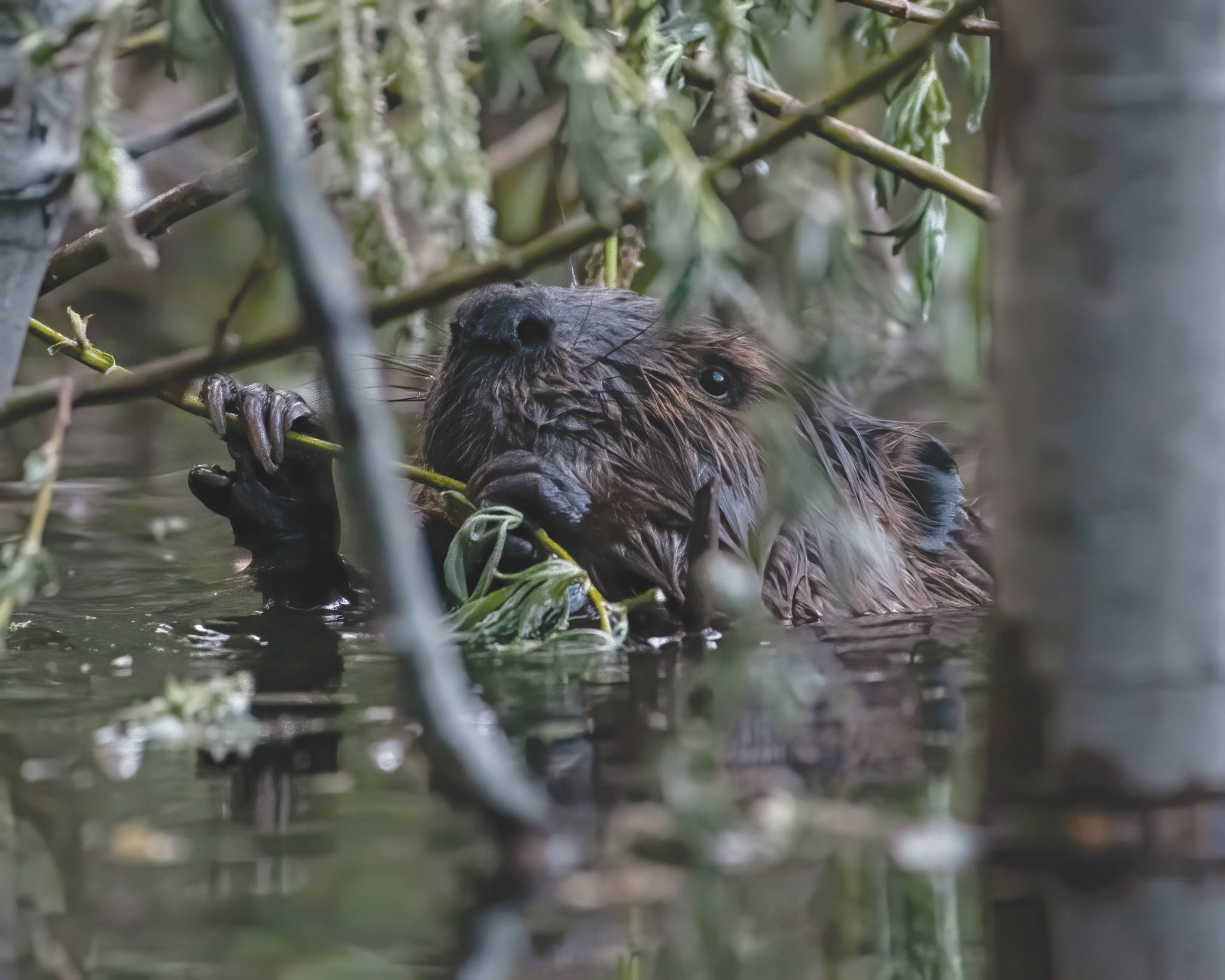I was skiing along a lake in the canoe system on a clear, cold winter day, enjoying the crisp fresh air and the shushing sound my skis were making on the snow when I came across two mounds of branches.
One of the mounds was almost 5 feet above the ice, covered in snow except for the top. This was the work of the North American beaver. The large mound was the lodge containing the den and the smaller mound was the winter food cache.
It made me recall a time early in my career as a fish biologist for the U.S. Forest Service in Juneau. A major Juneau attraction was the Mendenhall Glacier, drawing about a half million visitors a year. Nearby was a small recreation area with numerous ponds and hiking trails. The ponds provided rearing habitat for a small run of sockeye salmon.
In addition to attracting tourists, this recently deglaciated area attracted a beaver. Not long after arriving, an interesting contest of will between a few humans and the beaver began. We humans had a plan to transform the landscape to create a recreation area; the beaver simply had a different plan.
Several water control structures had been installed in the Mendenhall Lake Recreation Area such as levies and culverts. The beaver had commenced damming activity on a large culvert that protected trails and provided fish passage to a network of ponds. It took several days to remove the branches and reestablish water flow.
Until we could come up with a long-term beaver management plan, we repeated this procedure every couple of weeks, with the beaver showing no sign of conceding. At the end of the summer, we had a mountain of branches and a very personal understanding of the saying, “Busy as a beaver.”
This saying comes from the beaver’s amazing ability to transform the landscape to meet its needs by a tenacious work ethic. Beaver construct lodges to raise their pups and for protection from predators including bear, wolf, lynx and humans.
When gathering food, beaver try to stay close to the water’s edge where they can scramble if needed. They are not known for their speed over ground, but are excellent swimmers and divers. They can dive for 10 minutes, have transparent eyelids and lips that seal behind those big front teeth.
To build their lodges, beaver cut down trees along the water’s edge and drag them to the work site. They then cut them into smaller sections and start making a pile. They push mud in between the logs with their forepaws and slap the mud with their tail to pack it tight.
The lodge will have two underwater entrances to provide escape in case a predator enters. Inside will be a spacious den above the water level, about 3 feet by 3 feet, and an air vent.
The walls can be 2 to 3 feet thick and are reinforced annually. The lodge needs to be thick enough to prevent bears and wolves from digging into the den. Once frozen, the lodge walls become practically impenetrable.
The sound of trickling water can stimulate beavers’ damming behavior. Beavers need the water level to remain about 5 to 6 feet deep year-round to protect the underwater lodge entrance, and to have a layer of water under the ice to travel through.
If the water isn’t deep enough, they will build a dam. Beavers change the landscape by altering the hydrology through dam construction. They build dams to create ponds, raise the water level to cover their lodge entrance from predators, and create waterways for transporting food and building material.
The created ponds trap sediments and nutrients, promoting aquatic vegetation, and supporting invertebrate populations. The ponds provide high quality habitat for juvenile salmon and other fish species, amphibians, invertebrates, birds and large mammals. Moose feed on the aquatic vegetation.
The expanded food web attracts a range of foraging birds and mammals. The presence of beavers can increase species diversity and provide ecological resiliency to systems that are rapidly changing. Beaver activity can also have a negative impact by flooding trails and developed areas, weakening roadbeds and sometimes blocking fish passage.
When the surface of water surrounding the lodge freezes, beavers benefit from the layer of ice protecting the entrance to the lodge. The downside is the beavers are not able to forage for food in the winter and must store food beforehand. A beaver eats about 1.5 pounds a day during the summer and 2 pounds a day during the winter.
Sometime around September, beavers will start constructing their winter food cache. Beavers do not eat wood; they eat bark, roots, aquatic vegetation and grass. For the food cache, they will store cuttings from preferred shrubs and trees such as alder and willow.
The beaver will construct the cache near the lodge by shoving the cuttings into the mud and weaving successive layers on top. The cache must feed the beaver colony throughout winter and can store over 1,000 pounds of food.
Centuries ago, beavers were abundant across the Western United States. Their removal dramatically changed the landscape, reduced biodiversity and increased the effects of drought. Beavers are now being strategically reintroduced by conservation agencies and land owners where they can positively impact damaged ecosystems.
As the wetlands continue to shrink on the Kenai Peninsula, I can’t help but wonder if, given an opportunity, those beavers may have a different plan in mind.
As for those Mendenhall Lake beavers, they are doing well. In fact, a nice booklet was published about them. (http://juneaunature.discoverysoutheast.org/wp-content/uploads/2015/09/armstrongbeaver1.pdf). The Alaska Department of Fish and Game has an excellent species profile on the beaver, too. (http://www.adfg.alaska.gov/index.cfm?adfg=beaver.main).
Mark Laker is an ecologist with the Kenai National Wildlife Refuge. Find more Refuge Notebook articles (1999–present) at https://www.fws.gov/refuge/Kenai/community/refuge_notebook.html.
By MARK LAKER
For the Clarion

